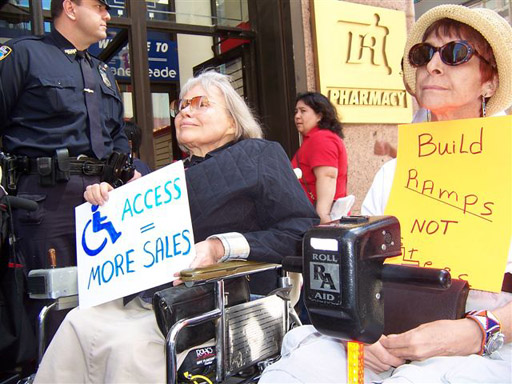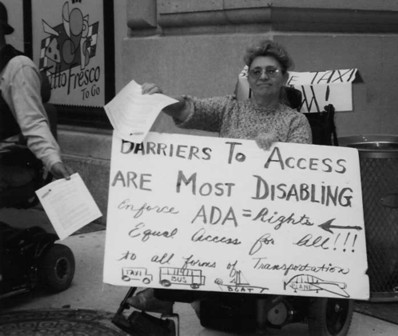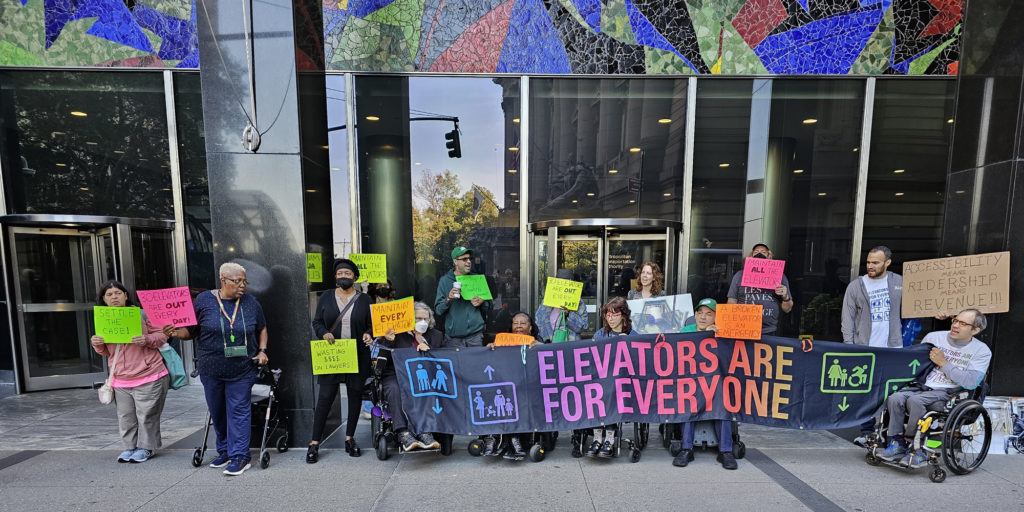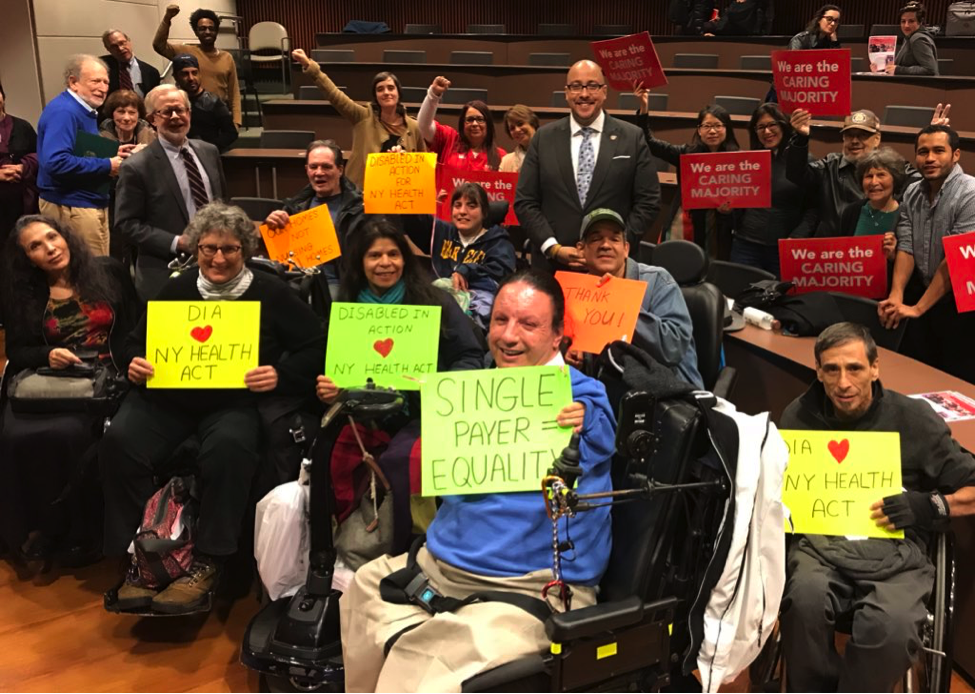


Image 2: DIA members and other activists are lined up in their wheelchairs on a busy NYC sidewalk holding signs. Behind them are inaccessible yellow taxis at a public taxi stand.
Image 3: A black and white photo of a woman in a wheelchair holding a sign with black texts that reads: “Barriers to access are most disabling. Enforce ADA = Rights. Equal Access to all forms of transportation” with drawings of taxis, buses, ferries, and airplanes at the bottom.
OUR CURRENT WORK
We, at Disabled In Action (DIA), recognize that all people with disabilities do everything and go everywhere and lead full and active lives. DIA advocates for and protects the civil rights of people with disabilities residing in and visiting New York City. For instance, we speak at presentations, we write letters, send emails and texts, make phone calls, join webinars, video conferences and conference calls. We also attend meetings and hearings in-person and virtually, and testify before State and City legislative bodies and agencies. We attend and speak at press conferences. We do interviews in person, on the phone, and by video conferences. We attend rallies and demonstrations. We attend, in person and virtually, the many conferences the federal and state courts hold concerning the cases in which DIA is a plaintiff.
ACCESS LAWSUITS
We have initiated and participated in lawsuits when nothing else makes change happen. The Americans with Disabilities Act, also known as the ADA, which passed in 1990, is one of several laws that requires public and private entities to make their services, programs and facilities accessible to all people with disabilities. Currently, DIA is involved in four subway access lawsuits as well as other lawsuits concerning pedestrian ramps, police station accessibility, and yellow taxi accessibility. You can read about our current and past lawsuits with Disability Rights Advocates.
DIA has other lawsuits with other firms about subway access and about poor and discriminatory treatment of people with mobility disabilities who have been arrested by the police.
ACCESS TO VOTING
Even though the polling places in New York City are more accessible than in the past, there are still access problems for people with various kinds of disabilities with respect to registering to vote, voting by absentee ballot, and voting in person during early voting and on Election Day. DIA has partnered with other organizations to work on those issues and to continue to make voting more accessible to New York voters with disabilities.
PARATRANSIT, SUBWAYS, AND BUSES
DIA has always been active in transportation access, and we continuously work on improving our access to paratransit, buses, and subways. For example, we have tested new buses and paratransit vehicles and we regularly advocate for safer and greater access to their services. We support on-demand access to paratransit. Further, we view sidewalks and streets as part of access to transportation. Our work includes advocating for the improvement of street and sidewalk safety, including our safety from vehicles, scooters, and bikes. We continue to be concerned about broken sidewalks, broken streets, and the lack of Accessible Pedestrian Signals (APS). We advocate for the prioritizing of the installation of APS at all corners where traffic signals exist as well as when new traffic signals are installed. We continue to advocate for safe pedestrian ramps at every corner and in the middle of the block if there is a signal. We are against the current New York City Department of Transportation (DOT) rule allowing cars to park at pedestrian ramps at a T intersection and are working for change. We want safe and accessible street design.

LONG-TERM CARE
DIA does not follow the medical model of disability that emphasizes a search for a cure. We know that quality long-term care is important to the independence of many people with disabilities of all ages. We fight for homecare and we also fight for good long-term care in facilities when home care is not an option. Significantly, DIA has endorsed the NY Health Act for many reasons, but most importantly because it would provide for long-term coverage of homecare.

ACCESS TO TAXIS AND FOR HIRE VEHICLES
DIA has been working for wheelchair access to yellow taxis since 1996, and we are still working on it. In 1996, there were zero taxis and now there is more access, but fewer taxis in total. We are part of a coalition called the Taxis For All Campaign. At the same time, we have been working to make For Hire Vehicles (FHV) accessible. Examples of FHV are app based rides such as Uber and Lyft as well as community car services and Black Cars.
SAFE ACCESS TO CITY HALL
Two DIA members over the years have accidentally rolled off the raised plaza at City Hall because of sun glare. We are fighting for signage and barriers there. We want a new safe and reliable vertical platform lift to give us direct access into the front of City Hall like we had for years.
ACCESS TO COURTS
Most court buildings have inaccessible restrooms, libraries, courtrooms, jury boxes, counters in clerk offices and many times the entire building and the programs and services provided in the buildings are inaccessible. For instance, the entrance to 80 Centre Street, where several courtrooms are located, needs to be made accessible for people with mobility disabilities so that we can independently and safely use this entrance to also access the Marriage Bureau, the District Attorney’s office, and the Family Justice Center.
